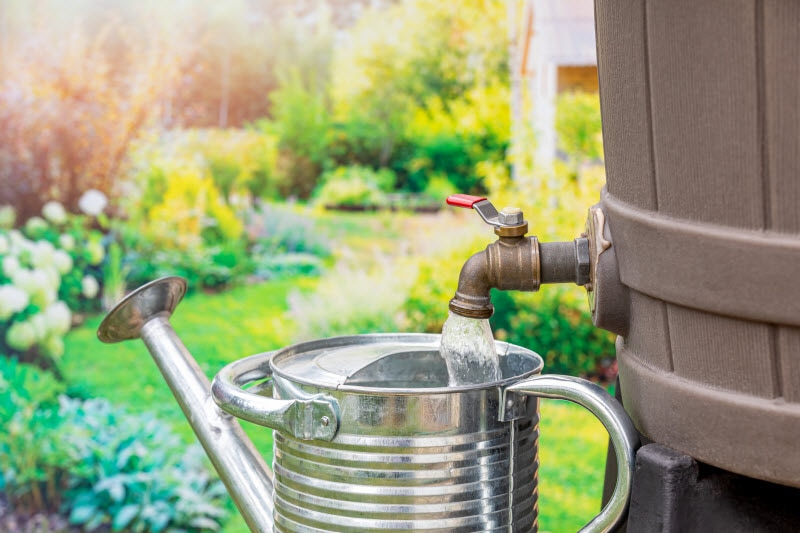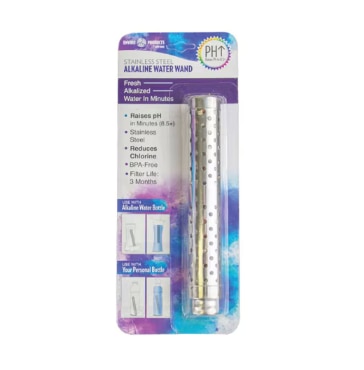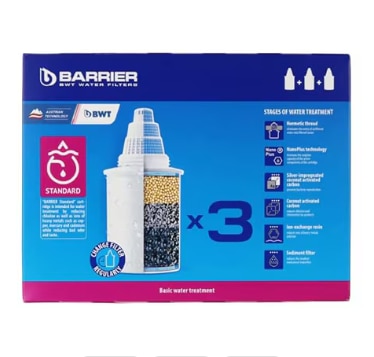Have you ever “harvested” rainwater? This is the practice of capturing, collecting and storing rain for later use. Rain is free, and taking advantage of a natural process to create a safe water reserve system is smart from both a dollar and sense perspective, not to mention vastly eco-friendly. And it is easy to do, whether you invest in a sophisticated, custom-designed system for rainwater capture, or keep the project simple, using a basic rain barrel collection method.

The importance of fresh water
It’s common to take clean water for granted in the United States, since so many of us can access this life essential with a simple turn of a faucet, but the reality is that as many as 2.2 million Americans live in homes without running water or even basic plumbing, while millions more are faced with aging water infrastructure and failing septic systems.
Clean water and sanitation are critical for maintaining good health and preventing the spread of disease. Water insecurity, in the form of scarcity or contamination, can cause short-term health effects like headaches, vomiting and diarrhea and can also lead to debilitating, long-term health issues, including kidney failure, hepatitis, diabetes and cancer.
According to National Geographic magazine, within as little as 50 years, many regions of the U.S. could see their freshwater supply reduced by as much as a third. Of the freshwater basins that channel rain and snow into the rivers−from which we obtain the water we rely on for everything from drinking and cooking to washing and cleaning−half may be unable to meet consumers’ monthly demands by 2071. This will mean serious water shortages for Americans.
As noted by the U.S. Centers for Disease Control (CDC), water insecurity costs the U.S. economy approximately $8.58 billion annually in lost labor and productivity, reduced household earnings and higher healthcare costs. As water scarcity issues are a real and present danger, we need safe, affordable solutions to ensure an ongoing supply. Our very lives depend on it.
This brings us back to the practice of harvesting rainwater, which is smart, exceedingly economical and, especially, sustainable.
The benefits of harvesting rainwater
Rainwater harvesting provides a source of clean fresh water in places where water is scarce, polluted or only seasonally available. Harvesting and storing rainwater is the most cost effective way to guarantee safe, clean water for drinking and home use, as well as gardening, taking care of animals, and agricultural needs.
It could be argued that using drinking water to flush toilets and water lawns is wasteful and irresponsible, especially considering population growth and water shortages across the country. We clearly need to think in terms of sustainability, and rainwater harvesting is a sterling example, offering a viable way to green your home and to positively shrink your environmental footprint.
Rainwater collection:
- Provides a comparatively clean, zero-cost source of water, as properly filtered and disinfected rainwater from a potable rainwater harvesting system is free of the chemicals found in municipally treated water, such as fluoride or chlorine.
- Is a socially and environmentally responsible process that relies on simple technologies which are inexpensive and easy to maintain.
- Promotes self-sufficiency and helps conserve water while significantly reducing your household water bills.
- Can be used for irrigation use, indoor non-potable water use, and/or potable water supply if filtered and disinfected.
- Offers advantages over hard water as it helps to eliminate the scale build-up in household appliances, effectively extending their lifespan.
- Saves you money as it reduces the amount of detergent or soaps needed in laundry and dishwashing appliances.
- Reduces stormwater runoff from homes and businesses. The elimination of runoff can reduce contamination of surface water with pesticides, sediment, metals, and fertilizers.
- Is healthiest for landscape plants and gardens as it is free of chemicals such as fluoride, chlorine and pesticides.
- Can provide a critical back-up source of water for emergencies.
How to harvest rainwater
If you like the idea of collecting rainwater naturally, you have a variety of options depending on your available space and budget, one of which is a rainwater kit.
Rainwater collection kits
Rainwater collection kits−also known as rainwater harvesting (RWH) systems−do not just capture rainwater; they also filter it, making it a safe, viable option for use within your home, as well as outdoor needs. However, these kits can be pricey.
For example, An average rainwater harvesting system costs around $3,000. Conversely, you can spend as little as $130 for a basic 55-gallon plastic rain barrel with a faucet.
DIY rainwater collection
DIY options can be very efficient if they are properly set up and managed. The key with all methods is taking advantage of gutter downspouts from your roof. This means placing an appropriately sized bucket beneath each gutter downspout to collect water from the roof as it drains. You will want to stabilize your water receptacle, which can be accomplished either by securing the bucket or barrel with rocks at the base, or digging a shallow hole where you can firmly place your bucket or barrel.
For an easy DIY filtration system, you can either attach flexible netting or a metal screen over the opening of your bucket, or you can filter the water on an as needed basis once it has been collected. Taking the extra step to add some kind of filtration screen will keep your harvested water free of leaves, feathers and other floating debris, which dramatically expands your usage options.
How to store and use harvested rainwater
To keep harvested water clean and safe, you will want to opt for a water storage vehicle with a lid. Keeping your water covered is essential, as stagnant water attracts mosquitoes and other undesirable pests.
So, what are the best uses for your harvested rain? Happily, you have a plethora of options, both for indoor and outdoor usage, as you can see from the list above. Inside your home, you can use properly filtered rainwater for drinking and cooking, though you may wish to briefly boil it first to minimize the risk of disease-causing organisms.
Outside of your home, fluoride and chlorine-free rainwater is ideal for watering plants, trees and shrubs in your landscaping, as well as for gardening and rinsing your harvested produce. It also lends well to garden water features, such as ponds and fountains, and for cleaning vehicles and equipment.
So, we have covered what rainwater harvesting is, why it is a beneficial practice both for you and the environment, your options−both simple and more complex−for creating a system to effectively capture, filter and store it, and finally, the many ways to use this gift from nature in your home, garden and landscape. Now, let the rain dancing begin!
Featured Products



The post How to Harvest Rainwater (and Why You Should!) first appeared on The Upside by Vitacost.com.

